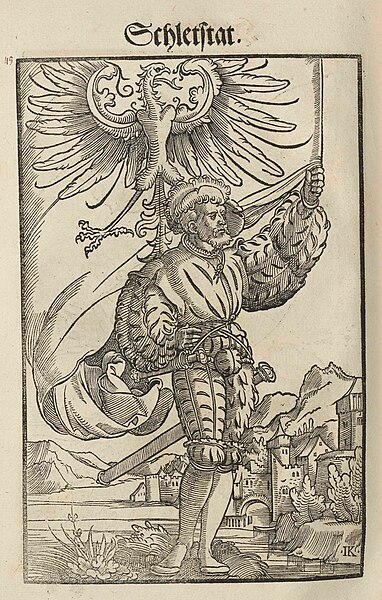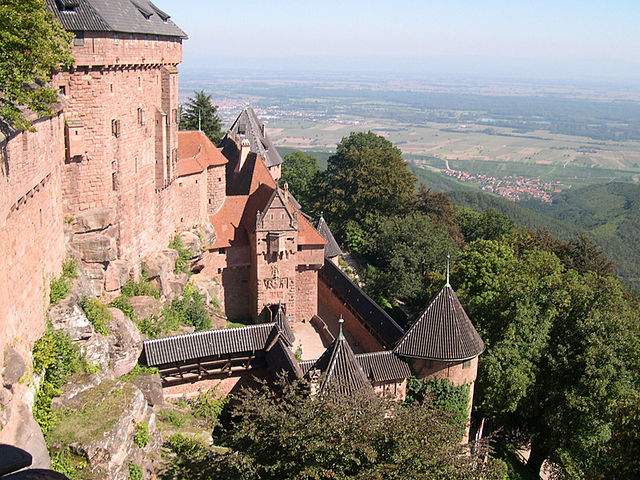Sélestat is a commune in the Grand Est region of France. An administrative division (sous-préfecture) of the Bas-Rhin department, the town lies on the Ill river, 17 kilometres (11 mi) from the Rhine and the German border. Sélestat is located between the largest communes of Alsace, Strasbourg and Mulhouse.
The Clock Tower
Bilingual French-Alsatian road-sign at the entrance of Sélestat.
An 18th-century relief on a house in the old town. It recalls the origins of Sélestat: the three mermaids symbolise the Ill river and its tributaries Lièpvrette and Giessen, the tree and reed stand for the Illwald forest and marshes, and the boat evokes the wine trade.
Engraving from Wapen des Heyligen Römischen Reichs Teutscher Nation (1545) with the coat of arms of Sélestat (at that time an eagle instead of a lion).
Bas-Rhin is a département in Alsace which is a part of the Grand Est super-region of France. The name means 'Lower Rhine', referring to its lower altitude among the two French Rhine departments: it is downstream of the Haut-Rhin department. Both belong to the European Upper Rhine region. It is, with the Haut-Rhin, one of the two departments of the traditional Alsace region which until 1871, also included the area now known as the Territoire de Belfort. The more populous and densely populated of the pair, it had 1,152,662 inhabitants in 2021. The prefecture is based in Strasbourg. The INSEE and Post Code is 67.
Prefecture building of the Bas-Rhin department, in Strasbourg
Château du Haut-Kœnigsbourg
Strasbourg Cathedral
Covered Bridge at Strasbourg








